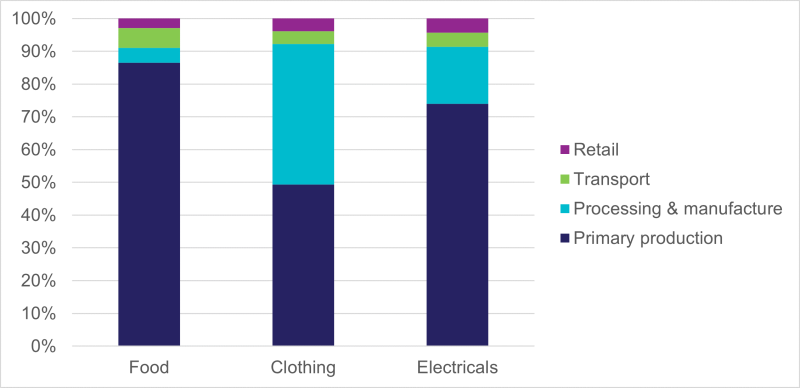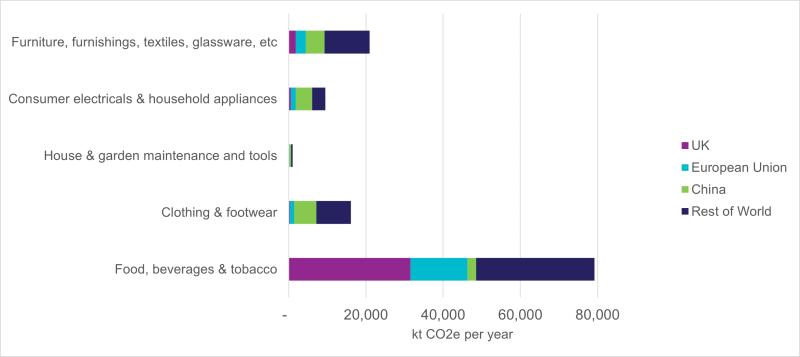7.1
Emissions overview
The extraction, primary production and processing of raw materials used in consumer goods frequently contributes the majority of supply chain greenhouse emissions (see examples in Figure 7.1a below of common consumer goods). These stages include emissions from a huge range of sources – from fertiliser use in agriculture to electrolysis in aluminium production.

Figure 7.1a: Typical share of emissions by retail supply chain stage[78]
Approximately half of the supply chain emissions associated with these products occur in the United Kingdom.[79] This reflects the fact that the largest source of UK raw material greenhouse emissions relates to the production of food and beverage ingredients (see Figure 7.1b below) and, in 2019, the UK supplied just over half (55%) of the food consumed in the UK by value.[80] This highlights the importance of supporting UK farmers and growers to deliver their Net Zero goal[81].

Figure 7.1b: Location and scale of greenhouse emissions associated with UK consumption of household goods[82]
Given the differing levels of influence UK retailers have over their varied raw material supply chain emissions, different approaches are needed for different sectors and production locations. The sections below explore five key areas for action: UK agriculture, deforestation risk commodities, packaging, textiles, and other materials.
[78] Food based on Poore, J. and Nemecek, T. (2018) Reducing food’s environmental impacts through producers and consumers. Science 01 Jun 987-992; Clothing based on data from Global Fashion Agenda; Electricals based on WRAP (2010) Environmental assessment of customer electronic products – Summary Report.
[79] WWF-UK/University of Leeds (2020) Carbon footprint: exploring the UK’s contribution to climate change
[80] Defra (2020) Food Statistics in your pocket: Global and UK supply
[81] NFU (2019) Achieving Net Zero Farming’s 2040 goal
[82] Derived from Defra’s publication: “UK's Carbon Footprint 1997-2017”